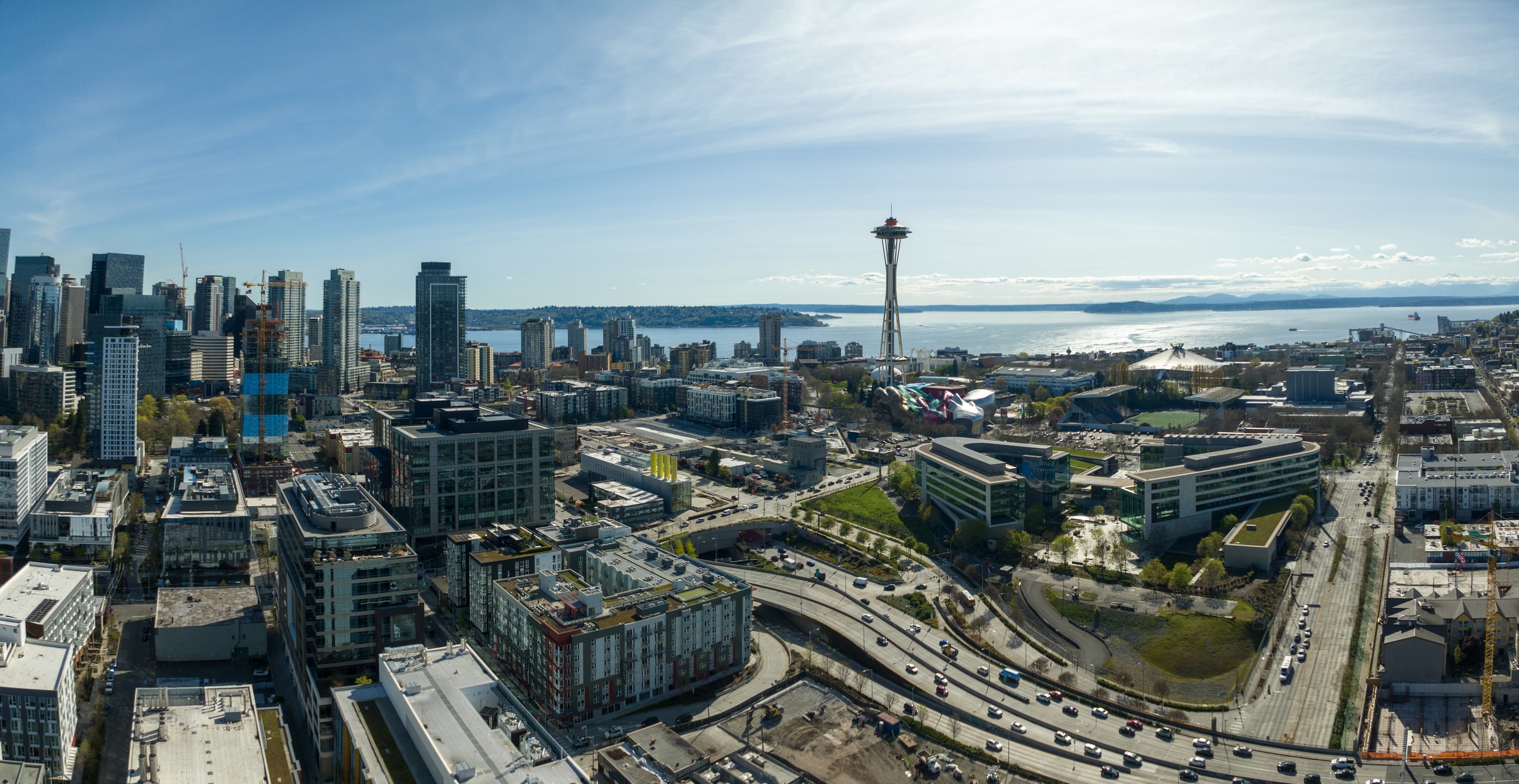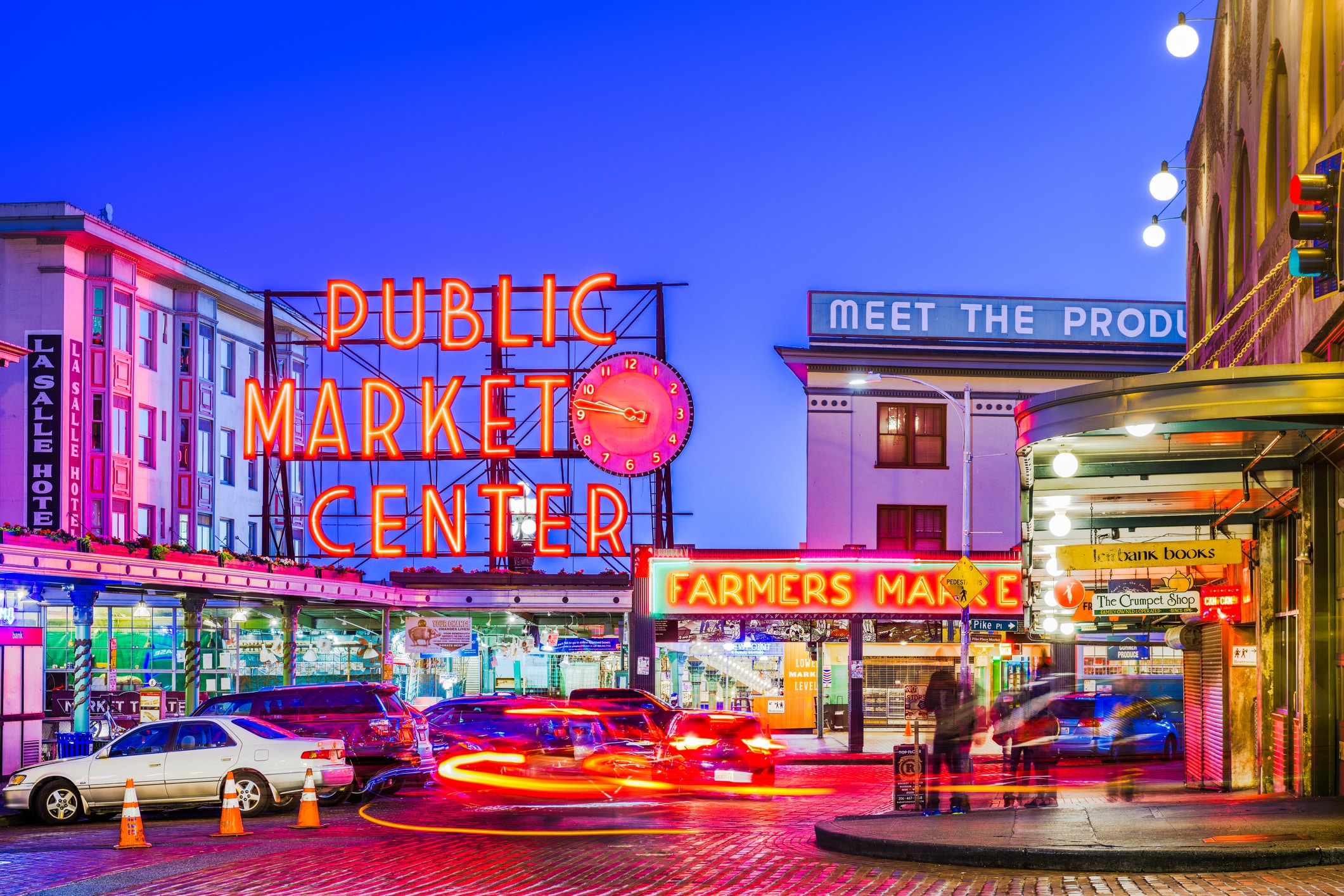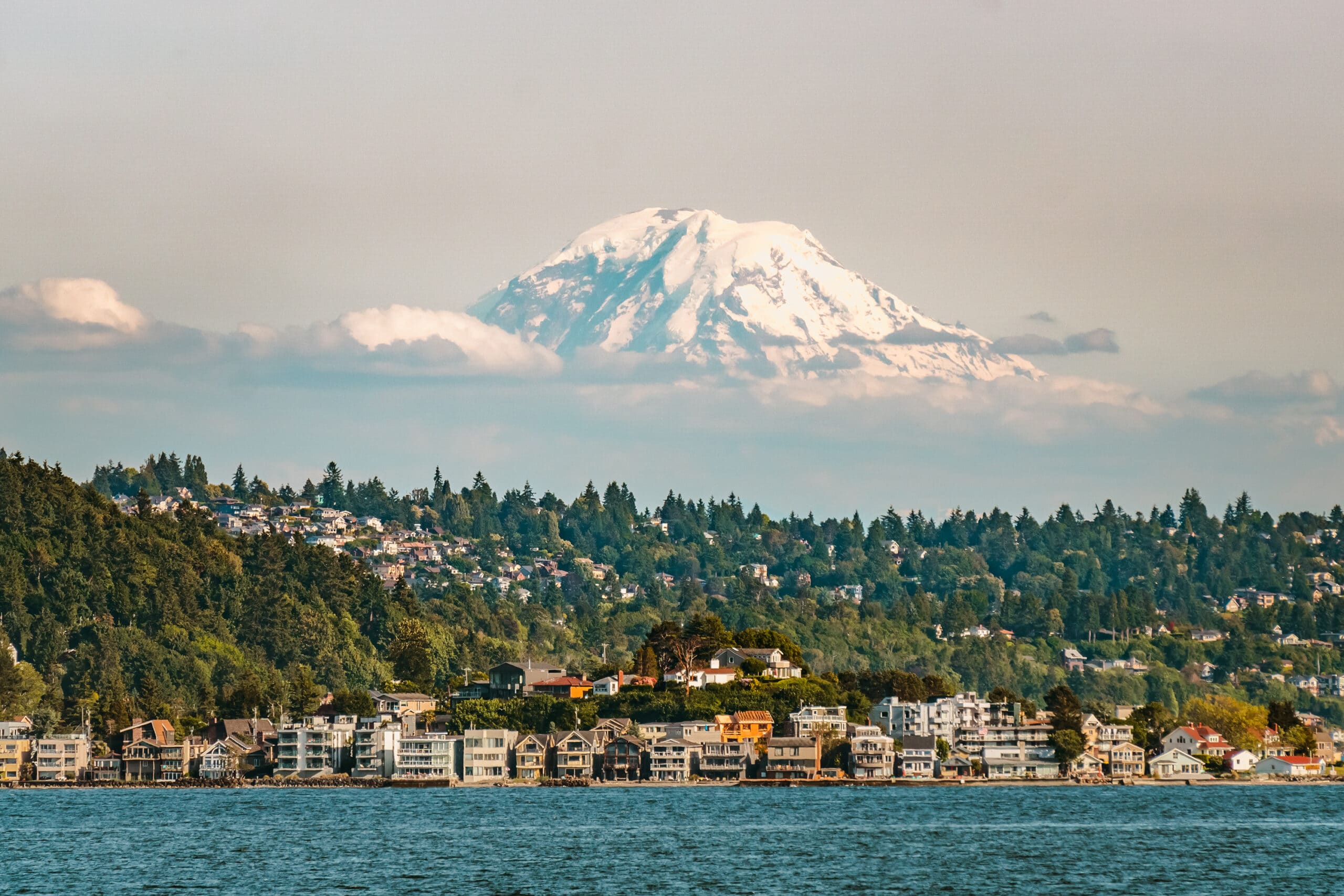(Updated October 28, 2024)
It’s probably no coincidence that Seattle produced both Starbucks Coffee and Kurt Cobain — when your city is cloudy an average of 220 days a year, you might need some angsty music and an afternoon coffee. But while it’s true that Seattle’s weather can be a little gloomy, those who live there will tell you the city’s other charms more than make up for some cloudy skies.
The Emerald City is a dynamic, modern, and eclectic city that can be incredibly rewarding for those who want to explore new sights, sounds, and experiences. On the flip side, it’s also pretty expensive, and the weather can be a real turnoff for some.
So, is moving to Seattle a good idea? In this article, we’re covering what you should know if you’re considering moving to Seattle — the good, the bad, and the gloomy — so you can decide if it’s the right choice for your next home base.

Moving to Seattle: 5 Things to Know First
1) There’s no shortage of great places to live in Seattle
What draws new residents to Seattle is, in no small part, its diversity and culture. Seattle has everything from upscale commercial districts and hip, artistic neighborhoods, to family-friendly enclaves all within its city limits.
Ballard
Ballard was once a separate city, incorporated into Seattle in 1907 during the latter’s expansion. It has become one of the city’s hippest spots, with exciting food, parks, and community spaces. Along with the dozens of restaurants and pubs, Ballard also contains scenic, waterfront Golden Garden Park and a year-round farmers market.
Capitol Hill
For those more interested in an exciting nightlife, vibrant music scene, and diverse community, there’s Capitol Hill. Near downtown Seattle and many tech hubs, Capitol Hill has become the prime nighttime spot for young professionals fully immersed in urban Seattle. It’s also home to a strong local LGBTQ community, reflected in murals and paintings throughout the neighborhood.
Beacon Hill
Located in southeastern Seattle, Beacon Hill is one of the city's most racially diverse neighborhoods. It includes long-standing Asian and African-American communities, and is also home to Jefferson Park, Beacon Food Forest, and Daejeon Park.
Queen Anne
Those looking for beautiful scenery — and eager to live in the lap of luxury — will want to check out Queen Anne, located near downtown Seattle. Home to Elliott Bay and the Space Needle, it also includes many historic landmarks, more upscale restaurants, and boutique merchants.
The University District
Home to the University of Washington, the University District is, not surprisingly, the stomping grounds of the local student population. As such, it offers a wide variety of international dining options, hip and niche shopping experiences, and music catering to a much younger generation.

2) The food is just as diverse as the population
As fans of the show know, Frasier Crane never missed a chance to hype up Seattle’s food scene. And while the good doctor and his beloved La Cigare Volante are, sadly, fictional, Seattle’s famous food scene is not. Depending on the neighborhood, you can find delicious local and international cuisine nearly anywhere.
Perhaps most notably, Seattle has some of the freshest seafood on the West Coast, including the legendary Pike Place Market. Furthermore, extensive farmland and a progressive attitude toward food have spawned a farm-to-table movement supporting unique, ethical menus.
3) Seattle’s weather reputation checks out
Seattle is generally considered a “Mediterranean” climate: mild, with average temperatures staying below 80℉ even in the middle of summer. Winters are also mild, and snow isn’t common.
That said, Seattle's climate is much cooler and wetter than a Mediterranean one, with significant average rainfall in the cooler winter months. From October to April, Seattle sees an average of 37 inches of rain.
But while it does rain often, Seattle’s annual rainfall is lower than cities like New York, Boston, or Houston. What gives Seattle its rainy reputation is the frequency and duration of light rain or drizzle, particularly in the fall and winter months, rather than intense downpours.
Outside of the rain, Seattle also has a reputation for gray, gloomy days. Its northern, humid climate leads to long stretches where you may not see much sun. Furthermore, Seattle’s location also impacts the length of the day. In the summer, the sun may not set until after 9 p.m., but in the winter, sunset can come as early as 4:17 p.m. This may contribute to what is known as the “Seattle Freeze,” a (theoretical) condition where residents of Seattle struggle with feelings of loneliness or isolation due to the weather.
4) Seattle has sector-leading public transportation
If you’re living in the city — and why wouldn’t you? — you’ll have little trouble getting around. Several studies have ranked Seattle’s public transportation system as one of the best in the nation.
WalletHub conducted a study that ranked Seattle as the best city for public transport across metrics like commute times, availability, and overall usage.
In a 2024 survey, U.S. News and World Report ranked Seattle public transportation as #9 in the country.
5) Seattle is a destination for outdoor enthusiasts
Seattle is often called the “Emerald City” due to the extensive greenery and mountain scenery available just outside the city. Some of the more scenic hikes include those at Mount Si, an eight-mile trek covering 3,100 feet of elevation, and a hike leading to an overlook at Snoqualmie Falls. Snow sports galore can be found in the mountains just north of the city, and North Cascades National Park offers everything from world class climbing and hiking to biking and camping.
While there are beaches near Seattle, they may not be the best choice for beach bumming. Most of Seattle’s shores are rocky rather than sandy, and since even summer temperatures are mild, beaches aren’t necessarily the main attraction for outdoors lovers. The ocean has plenty to offer besides sunbathing, however, including migrations of orca whales through the Puget Sound from May through October.

What Are the Pros and Cons of Living in Seattle?
The Emerald City brings some major benefits for new residents looking for employment, outdoor recreation, and diversity:
From an international student population and a diverse workforce rooted in the tech industry, to solid support for many different lifestyles, Seattle welcomes anyone who chooses to live there.
The tech market is booming, and nowhere is that more visible than in Seattle. Home to major companies like Microsoft and Amazon, that doesn’t look likely to change any time soon.
The surrounding Washington landscape is vibrant, natural, and, in many cases, breathtaking. Nearby mountains, forest trails, and waterfalls provide hikers and campers with a nearly endless selection of places to explore.
Likewise, there are some drawbacks for those who aren’t prepared for high prices or challenging weather:
Seattle's weather is mild, so thankfully, there aren’t issues with tornadoes, hurricanes, or other disasters. However, the persistent gray skies have become well-known for dampening spirits, particularly for those prone to mood-related issues.
The cost of living in Seattle is incredibly high compared to the national average. New tech professionals have been flocking to the city because, for the most part, they can afford to live in this metropolis. Prospective new arrivals may want to look elsewhere for more affordable housing.

Before Moving to Seattle, Do Your Research
Seattle has a lot going for it. Beautiful natural landscapes surround the Emerald City, support a diverse set of communities, and — for those who can afford it — provide one of the more modern metropolitan experiences on the West Coast.
But is moving to Seattle worth it for those benefits alone? Many may struggle with the challenging weather and the high cost of living. Older people moving to Seattle may also find that the population skews much younger, with a local culture reflecting that sensibility.
If Seattle is the right place for you, Colonial Van Lines is here to make your long-distance move to Seattle as easy as possible. From packing, loading, and driving, to unloading, unpacking, and even the reassembly of furniture, our team of professionals is dedicated to providing a seamless moving experience. Contact us today for a free quote!

